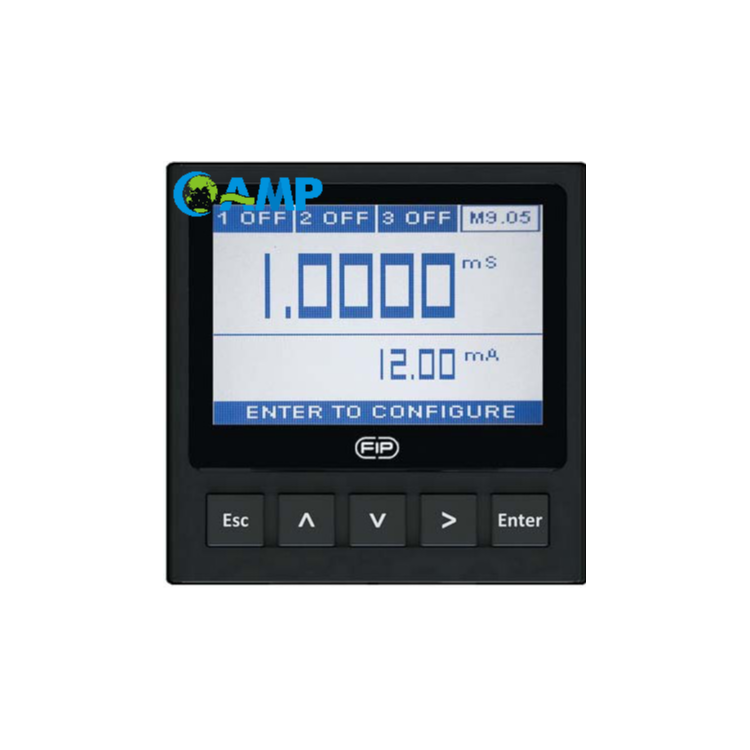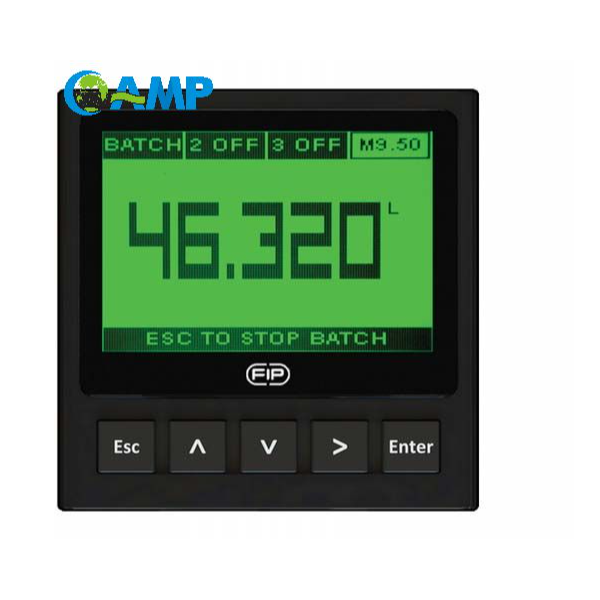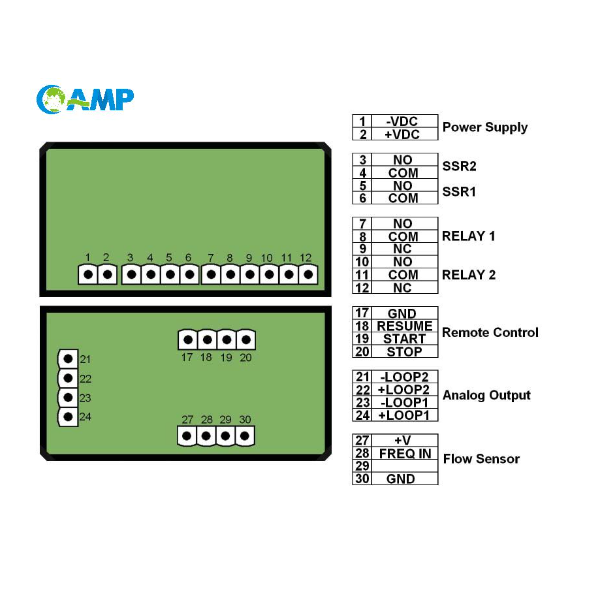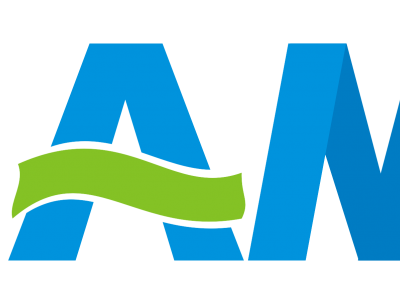-
 Chen Si
Hi there! Welcome to my shop. Let me know if you have any questions.
Chen Si
Hi there! Welcome to my shop. Let me know if you have any questions.
Your message has exceeded the limit.

How Does a Conductivity Detector Work? A Comprehensive Guide
2025-10-24 16:42:28
Action of the law of the riddle orientation on terms of a solution and their tangible properties poses important considerations in many sectors of science and industry, conductivity measurement equipment being one of their major tools. But how does it really work? Whether you are a researcher working on electrolytic solutions, quality control engineers, or just somebody ever fascinated with the cotillions of science, we are set to lay down for you. From basic theory going all the way to autopsy of actual working, we will examine the practical functioning of conductivity detectors, their importance, and application in measuring conductivity with precision. By the time you will have gone through this article, will be able to tentatively claim to hold in one's hands the essence of this machine and the science behind it. Let's go!
Introduction to Conductivity Sensors
Conductivity sensors are devices that measure a solution's ability to conduct current. The capability depends on ions existing in the solution, such as salts, acids, or bases. These sensors find great use in water treatments, food production, and chemical manufacturing industries, where solution quality and safety are important. Conductivity sensors aid in the quick and reliable measurement of process parameters to ensure close monitoring and control.
Overview of Conductivity Detectors
Conductivity detector works on the principle of current flow through a solution, which depends on ion concentration and mobility. The unit of measurement is usually microsiemens per centimeter (µS/cm) or millisiemens per centimeter (mS/cm). A higher concentration of ions corresponds to a larger numerical value of conductivity, thus making it an indicator of solution purity or contamination.
Applications and Use Cases
Water Treatment
In water treatment plants, conductivity sensors are necessary for monitoring water quality. For instance, ultrapure water in industries like pharmaceuticals and electronics fabrication usually displays conductivity below 1 µS/cm. But real-time measurements ensure strict adherence to purity standards.
Food and Beverage Industry
Conductivity measurement helps maintain uniformity in product quality during fermentation or brine preparation. Certain studies point out that the control of very specific conductivity ranges improves batch reproducibility and production efficiency.
Chemical Manufacturing
Conductivity measurement is necessary as chemicals are being mixed and as reactor systems are monitored, to keep reactions consistent and prevent unwanted by-products. It is becoming clear from recent industrial reports how the use of this technology rises dramatically when this technology is being applied in chemical automation.
The Newest Innovations in Conductivity Sensors
Thanks to the recent developments in sensor technology, modern conductivity detectors are perceived to be more precise, durable, and capable of integrating data. For instance:
Smart Sensors: IoT-enabled sensors that transfer real-time data to central systems to perform predictive maintenance and optimize processes.
Wide Measurement Ranges: Sensors today can measure conductivity at ultra-high and ultra-low scales, hence widening their scope of applications.
Self-Cleaning Sensors: By design, these new sensors include self-cleaning probes that require little maintenance where contamination is high.
Operational efficiency is enhanced, and downtime reduced across industries when these innovations are combined with real-time monitoring systems. With the global demand for conductivity sensors rising, expect continuous improvements and probable growth rates of more than 7% CAGR by 2030.
Importance of Electrical Conductivity Measurement
Measurement of electrical conductivity finds its major use in all industries for the determination of ionic content present or absent in solutions. In water treatment, the conductivity of water is one of the most relevant parameters in checking water quality. Importantly, impurities within the water are detected through conductance probes to scrupulously adhere to stringent regulations. Now, as per recent data, the water treatment jurisdiction is supposed to hit USD 211.3 billion by 2025, thus defining the growing relevance for the accurate measurement skills.
The food and beverage industry is another sector where electrical conductivity is very essential. Conductivity measurements have varying uses: to keep salinity levels in check, to check the sugar concentration, and for cleaning in place (CIP). With technological advancement, the sensors have now been made to work with higher accuracy, which has led to an improvement in product consistency and an overall reduction in operational costs.
Within the scope of the applications, the pharmaceutical industry values the purity of water for drug manufacturing. Conductivity must be checked to ensure that the water met the requirements set forth by several regulations, including that of the United States Pharmacopeia (USP). And because it has a compound annual growth rate pegged at 9.1% through 2030, the pharmaceutical industry will continue driving advances in this field.
Such applications highlight the necessity of further improving the accuracy, durability, and efficiency of sensors to meet enhancements in industry demands.

The Science Behind Conductivity Detection
Conductivity is detected by measuring the ability of a solution to conduct an electrical current. As such, it is primarily affected by the ion concentration in the solution, the temperature, and the kind of ionic compounds present in the solution. To ensure that the conductivity measurement will be accurate, the sensor needs to be quite sensitive, and it has to be calibrated consistently for the varying applications.
What Is Electrical Conductivity?
The factors that primarily affect electrical conductivity are ion concentration, temperature, and the kind of material involved. It has been found through research that for every 1°C rise in temperature, the conductivity of water increases by around 2 to 3%. Higher temperatures speed up ion movement, improving the flow of electricity. Furthermore, the type and concentration of the dissolved salts present in water, such as sodium chloride or calcium carbonate, also play important roles in changing conductivity.
Key Figures and Uses
Normal Conductivity Ranges:
Pure Water: Around 0.055 µS/cm.
Drinking Water: 50-500 µS/cm, dependent on region and source.
Industrial Water Systems: They keep water between 200 µS/cm and 1000 µS/cm depending on what gives maximum efficiency to equipment.
Industries That Rely on Conductivity Monitoring:
Water Treatment Plants use conductivity measurements to judge water purity and to ensure environmental standards are met.
Pharmaceuticals require ultra-pure water of low conductivity so as not to intermingle during production processes.
Food and Beverage Industry monitors conductivity during brewing or bottling so as to ensure consistent quality of products.
A sensor must detect conductivity levels with great precision and in real-time to accommodate industrial applications today. The most advanced conductivity meters now include temperature compensation and an advanced calibration mechanism that assures measurement accuracy even when working in variable environmental conditions. Such innovation has eased processes and, at the same time, has upheld stringent regulatory compliance.
Role of Ions in Conductivity
Ions are mostly responsible for creating conductivity in a solution. When an ionic compound dissolves in water, that combination dissociates into positively charged cations and negatively charged anions that freely move about in the solution. The concentration of ions in the solution, coupled with the mobility of each ion individualistic of itself, gives rise to the degree of conductivity. So, for instance, a highly ionized solution has very high conductivity, whereas the weak ionization of pure water shows a barely measurable conductivity.
From more recent data, one must formulate that the conductivity of seawater stands at about 50,000 µs/cm more or less, being vastly greater than that of deionized water, which would otherwise be less than 1 µs/cm. From such huge difference, one can note the significance of ions being measured and moving afterward to define conductivity. Electricity conduction by ions is, therefore, dependent on factors including ion charge, ion size, and temperature, as has been explained in scientific literature. It is on this basis that, in a real-time scenario, water treatment plants monitor and adjust the water quality to satisfy environmental and industrial standards.
The main advantage of these types of microorganisms is that, through modern instrumentation, intensive ionic information is obtained, keeping industries well informed down to the last ion, even when dealing with complex multi-ion solutions. Such technology is needed in chemical manufacturing and environmental monitoring, where it becomes imperative to keep the ion level at a certain standard for successful progress.
How Does a Conductivity Detector Work?
As indicated by their name, a conductivity detector detects an electric current between two electrodes immersed in a solution. It will proceed to measure the electrical conductivity of the solution-the property of carrying electric current-that depends on the concentration of ions in that solution. Higher the concentration of ions, better the electric conductivity. The conductivity value is derived from the output obtained from such detectors, which is considered in further analysis for different purposes, such as quality control and chemical analysis.
Principle of Operation
Modern conductivity detectors have undergone massive upgrades to bring precision and flexibility to the scientific and industrial arenas. According to some more recent accounts, these detectors have become bases of many lab investigations, including the treatment of water, production of pharmaceuticals, and environmental analysis because they can provide trustworthy measurements of ionic content in solutions.
For instance, the conductivity within freshwater for water quality monitoring normally lies between 50 and 1500 µS/cm, with seawater conductivity averaging 50,000 µS/cm due to its salt content. Conductivity detectors would also be used in industry to check product uniformity-such as the purity of deionized water in laboratories, where it must be less than 1 µS/cm.
With the union of conductivity detectors with digital technology, the system now allows for real-time monitoring and data logging. Modern-day conductivity systems provide automated calibration, wireless connectivity via Bluetooth or Wi-Fi, and have been designed with compatibility for analytical software to support easy data analysis. All these developments have contributed to increasingly advanced conductivity measurement methods being simpler to apply on-site in numerous environments.
Emission of Electrical Current through Electrodes
The discharge of electric current into, and through, the electrodes is a basic process of basically any electrochemical system and conductivity measurement. An electric potential is applied across two electrodes set within a liquid wherein ions of the medium facilitate the passage of electric current. The relation is very important: the greater the ionic concentration, the higher is the conductivity of the solution.
Key data and findings were newly developed in this field. For instance, platinum electrodes are generally preferred for their high corrosion resistance and excellent conductivity properties. It has been found that the surface area of the electrode plays a critical role in measurement sensitivity, such that electrodes with a large surface area increase current emission and improve accuracy of the system.
Modern studies also find ways to reduce signal noise and provide greater stability through the optimization of electrode materials and their coatings. Recent data suggest that with advancements in nanotechnology, it was possible to prepare nanostructured electrode surfaces which help accelerate current emission by at least 40% over the traditional ones. Such achievements greatly contribute to those areas where concentration and trends in the concentration of chemicals need to be analyzed: these include water quality analysis, chemical manufacturing, and medical diagnostics.
Also, experimental observations showed that a linear relationship is maintained between measured conductivity and ion concentration from 25°C up to 80°C, ensuring dependability of its performance in varied environments. Using this with the data acquisition system allows the measurements to be made very accurately, thus enabling great research and industrial uses.
Factors Affecting Conductivity Measurement
There are several factors affecting conductivity measurement, which need to be carefully controlled for obtaining accurate and reproducible results. Some key points and the relevant data are as follows based on the present research and practical application:
Temperature Dependence
Temperature-dependent conductivity of a solution varies in the presence of ions. For example, one of the studies suggests that in general as temperature goes up, an increase in ion mobility occurs, leading to an elevation of conductivity. Also, most solutions show a conductivity increase of about 2% for every degree Celsius increase in temperature, in the range of 25°C to 100°C.
Ion Concentration and Types
Conductivity changes according to the concentration and nature of ions presented in the solution. Strong electrolytes dissociate fully in aqueous medium; for instance, NaCl produces high conductivity, whereas, with weak electrolytes such as acetic acid, conductivity is less. Therefore, a 0.1M solution of NaCl conducts approximately 10 mS/cm, whereas the same molarity of acetic acid conducts only 0.5 mS/cm, having recently been tested in the laboratory.
Electrode Surface and Calibration
Conductivity electrodes present altered measurement due to contamination or surface inconsistency. Using modern electronic calibration units, an automatic calibration can now be performed, reducing human error, and thus increasing operational efficiency by approximately 15%, according to leading instrumentation manufacturers.
Solution Composition
Conductivity is a term used to express the property of a solution wherein its ability to permit the flow of the current in the present of ions varies due to interactions or competition of ions within. High-purity water used in semiconductor fabrication requires conductivity less than 0.055 µS/cm to ensure limited ionic contamination.
Much effort is also focused on the development of temperature-compensated conductivity meters that perform real-time compensation in adjustments in their readings to increase their accuracy. These developments are greatly required where stringent standards are imposed, such as pharmaceuticals and environmental monitoring.

Benefits of Using Conductivity Detectors
Because of their versatile applications and reliability, conductivity detectors are in wide usage within several industries. They are used to monitor water quality, keep consistency in chemical manufacturing, check impurities in pharmaceutical substances, and measure salinity for environmental testing. The ability to measure precisely and in real time has made their presence imperative in carrying out quality assurance and regulatory compliance.
The Real-Time Measurements
Conductivity detectors excel at measuring quantities in real time, a feature ideally suited for applications requiring instantaneous and accurate data. For example, in water quality monitoring, modern conductivity sensors are able to detect changes within seconds in the ionic concentrations. According to research, advanced conductivity meters can measure to an accuracy of 0.055 µS/cm, making certain that ultrapure water is analyzed with utmost precision in industries such as pharmaceuticals and semiconductors. The detectors further complement such advanced features with smart connectivities such as IoT integration, enabling continuous data transmission and remote monitoring. Thus, this innovation helps industries to bolster their efficiency with shorter response times in dynamic systems, ranging from wastewater treatment facilities to chemical processing plants.
Integration with Automated Systems
Given the real-time analysis requirements of ultrapure water, detectors are integrated with automation systems to carry out various surveillance functions throughout industries. Accommodating innovations have now shifted focus on implementing machine learning algorithms and artificial intelligence to detect patterns and anomalies in real-time data. For instance, one study has opined that IoT-enabled monitoring systems reduce operational costs by as much as 25% because of increased accuracy and diminished need for manual intervention. From a compliance standpoint, intelligent monitors equipped with data auto-transmission ensure blind adherence to strict regulations, such as those enforced by FDA when used in pharmaceutical manufacturing or by ISO standards in semiconductor production.
Currently, the modern-day systems would go through a cloud-based service platform for aggregation and databasing to allow easy access coupled with security. Industrial IoT spending, according to Google Insights, will cross $1.1 trillion in 2028, showing an increase in the adoption of these technologies worldwide. The bigger interest echoes the interest of such systems in improving water treatment and chemical processing efficiency and greater sustainability. By way of automation, one can channel resource optimization and better quality control, which eventually lower the risks that human errors might impose.
Tips for Using and Maintaining Conductivity Detectors
Regularly calibrate the detection system to maintain the high accuracy. Without calibration, there is always drift in measurement with time, resulting in erroneous readings or errors during applications. For precision, one has to use standard calibration solutions whose expected conductivity should correspond to the actual conductivity of the given type of measurement. Follow hyphenated guidelines regarding they and frequency with respect to gaining the best parameters out of the apparatus and for having a higher life time.
Best Practices of Calibration
Importance of Being Calibrated Regularly
Sometimes, it can be said that regular calibration is indispensable to the accurate results in conductivity detection, as this process assures that measurements remain consistent and reliable throughout time. According to the current standards of the industry, calibration should be carried out with known conductivity values as reference, such as potassium chloride (KCl) solutions, which enjoy a reputation as very stable reference standards. These solutions are widely accepted, and for a further elaboration, 0.01 M of KCl normally has a conductivity value of 1,413 μS/cm at 25°C, which is widely accepted as a common calibration value.
Calibration Affects Accuracy
Calibration accuracy may be influenced by industrial processes: temperature change, sensor contamination, or quality of the calibration solution. For successful operational calibration, having constant temperature is highly recommended: even a minute change in temperature affects the conductivity values significantly. Modern-day conductivity detectors are often equipped with ATC to provide maximum measurement accuracy.
Recommended Calibration Frequency
Calibration frequency is dependent on the application and environmental conditions of any device. For industrial-grade critical processes requiring utmost precision such as pharmaceutical and wastewater treatment, calibration may be necessary daily or even before each use. In less critical situations, an interval of a week or a month between checks might be sufficient. Always follow the operational manual which specifies the calibration intervals recommended by the manufacturer.
Advantages of Advanced Calibration Technologies
Today, with smart sensors and automated calibration systems available, new technologies in calibration have come about to speed up calibration and remove the possibility of human error. These features provide real-time diagnostics and ensure that the device always functions within specific parameters, hence are improving efficiency and reliability.
Observing these detailed specifications and applying modern calibration tools, operators can maintain the electrochemical procedure in testing applications for a long time to have performing accuracy and precision.
Troubleshooting Common Issues
Conductivity detectors are sometimes subject to several common problems, which may impact their performance and reliability. These issues are regarded as common, and here are some of them, along with their remedies:
Drifting Electronically Measured Values
Conductivity detectors could develop drifting inculcations, through which the readings may cease to reflect the real conductivity of the sample. It is mostly attributed to sensor fouling or aging. The best way to minimize such drifting is to perform frequent calibration using certified calibration solutions. Initially, manufacturers recommended calibration every time before use; however, recent studies have proposed calibration be done periodically, every 2-4 weeks, depending on environmental conditions and intensity of use.
Errors of Temperature Compensation
Conductivity readings are greatly influenced by temperature fluctuations in the reading area. Normally, modern detectors are equipped with an automatic temperature compensator (ATC); however, if ATC settings are not configured correctly, they may give erroneous readings. Make sure to use compensation algorithms that suit the particular application. For instance, most systems base their calculation on a temperature coefficient of 2% per °C.
Electrode Wear or Damage
Prolonged use of the conductivity electrodes may give rise to physical wear, improper conditioning, and thus a host of erratic readings. It is essential to inspect your electrodes for cracking, deposits, or other forms of damage. Often cleaning is all that is necessary, using proper cleaning solutions such as mild acid for inorganic deposits.
Electrical Noise Interference
Increased electromagnetic interference depletes conductive readings. So the device needs to be in a shielded environment away from large motors, power lines, or any source of interference. Modern day instruments utilize noise-filtering methods, so one can check the manufacturer's specifications to help in troubleshooting.
Incorrect Treatment of Sample
Sample volume is incorrect, the sample is contaminated, or the sample is not mixed properly; all these can influence conductivity readings. Ensure protocols for the consistent, clean handling of samples. Studies point to contamination of samples as the leading cause of inconsistent data, further stressing the need for a controlled testing environment.
If care is paid to issues such as these behind the scenes and best practices adopted, operators can maximize the precision and efficacy of conductivity detectors for top quality results in a wide array of applications.
Tags: How Does a Conductivity Detector Work, conductivity detector


